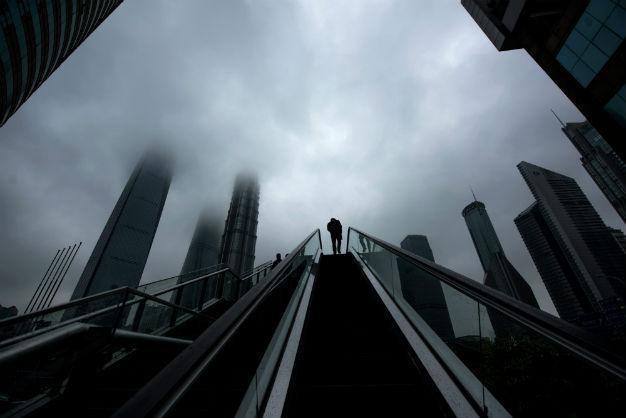World Bank: China's growth to ease to 6.7 % in 2016
MANILA, Philippines - The Associated Press

AFP photo
China will remain the main driver of growth in Asia this year despite its prolonged slowdown, helped by sustained expansions in other developing countries in the region, the World Bank said April 11.The U.S.-led development bank forecasts that developing East Asia will grow at a still robust pace of 6.3 percent this year, down from 6.5 percent in 2015. It said the Philippines and Vietnam will lead growth, with economies expanding by more than 6 percent.
Indonesia, the biggest economy in Southeast Asia, is forecast to grow by 5.1 percent in 2016 and 5.3 percent in 2017.
In 2015, developing East Asia and the Pacific accounted for almost two-fifths of global growth, more than twice the combined contribution of all other developing regions, said Victoria Kwakwa, incoming World Bank East Asia and Pacific Regional Vice President.
"The region has benefited from careful macroeconomic policies, including efforts to boost revenue in commodity-exporting countries," she said. "But sustaining growth amid challenging global conditions will require continued progress on structural reforms."
China, the world's second-biggest economy, is shifting from export and investment-led growth to a greater reliance on consumer spending. The World Bank's latest estimate puts growth at 6.7 percent this year and 6.5 percent in 2017, down from 6.9 percent in 2015.
The report said a cloudier than earlier expected global outlook could weaken demand, sapping momentum in the region, especially among commodity exporters. It called for close monitoring of economic risks, particularly those associated with high levels of debt, price deflation, slower growth in China, and high corporate and household debt in some large economies.
China reported Monday that its inflation remained steady at 2.3 percent in March, while wholesale prices paid by manufacturers, the producer price index, dropped 4.3 percent. To counter that deflationary trend, authorities plan to eliminate much of the country's excess factory capacity, especially in the steel sector.
The World Bank report urged China to continue reforms of its restrictive household-registration system, and to shift public spending from infrastructure toward public services including education, health, social assistance and environmental protection.
Among the large developing Southeast Asian economies, the Philippines and Vietnam have the strongest growth prospects, with both seen to grow by more than 6 percent in 2016.
Indonesia, the biggest economy in Southeast Asia, is forecast to grow at a 5.1 percent pace in 2016 and 5.3 percent in 2017. That will depend on the success of recent reforms and follow-through on ambitious public investments.
Low commodity prices and weaker external demand will continue to affect several small economies, including Laos, Mongolia, and Papua New Guinea. Cambodia's growth will be slightly below 7 percent in 2016-2018 due to weaker prices for agricultural commodities, constrained garment exports, and moderating growth in tourism.
"Countries should adopt monetary and fiscal policies that reduce their exposure to global and regional risks, and continue with structural reforms to boost productivity and promote inclusive growth," said Sudhir Shetty, the bank's chief economist for East Asia and the Pacific region.
















